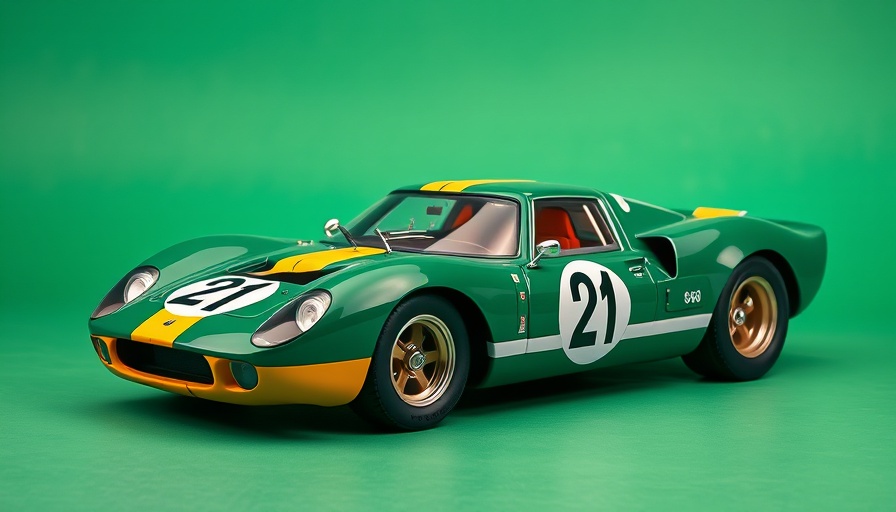
The Legacy of the Lotus Type 38: A Historic Throwback
In the world of motorsports, some moments remain etched in time, and for the Wood Brothers Racing team, their connection to the 1965 Indianapolis 500 is one such moment. As NASCAR gears up for its 'Throwback Weekend' at Darlington Raceway, the team will honor this historic event by unveiling a special paint scheme reminiscent of the legendary Lotus Type 38, the vehicle that brought Jim Clark his victory—a milestone that changed racing history forever.
Why This Pain Scheme Matters to Fans and History Aficionados
This red and white paint scheme has undergone a striking transformation and will now feature the iconic yellow and green style of the Lotus Type 38, a car that was revolutionary not just for its aesthetic but for its engineering as the first rear-engine car to win the Indy 500. Leonard Wood, a formative figure in this narrative, expressed his excitement for this nod to their shared past at a recent unveiling held at the Henry Ford Museum. "It's a great way to honor that moment," he remarked.
Behind the Scenes: The Incredible Pit Stops of 1965
While the speed of the race is paramount, the unsung heroes of any race are often those behind the pit wall. The Wood Brothers weren't just pit crew members; they were innovators. Their ability to fuel Clark's car at unprecedented speeds left even veteran race commentators in disbelief. They managed to pump 58 gallons of fuel into the tank in 15 to 20 seconds by cleverly leveraging gravity and using a large venturi. This ingenuity not only secured their spot in racing lore but also showcased a breakthrough in race strategy that would influence pit stops for decades. Leonard recalls the skepticism around the car, "They said we wouldn't be able to pour 20 gallons in a minute, yet we did."
Linking the Past and Future: Modern Implications for NASCAR
The return of such a historic livery during NASCAR’s Throwback Weekend serves as a bridge for older fans who revel in nostalgia and younger fans who may be unfamiliar with the legendary figures of racing's past. It’s a juxtaposition of two eras, where innovation meets heritage. This approach aims to engage fans on multiple levels, particularly since the connections between different racing formats—open-wheel and stock car—are not always apparent. The throwback scheme isn't just about honoring Clark; it’s about celebrating a lineage of racing innovation.
A Moment to Celebrate Teamwork and Ingenuity
Setting the nostalgic tone, Wood shared, "This is one of the greatest moments of my life." His heartfelt appreciation underscores the significance of honoring the legacy of the Lotus Type 38 while pushing forward with their current endeavors. The Wood Brothers Racing team continues to strive for excellence, exemplifying that the principles of teamwork and ingenuity that allowed them to thrive in the past remain relevant today.
The Darlington race will be more than just another race; it will become a living history lesson in teamwork, precision, and the evolution of racing techniques. As Josh Berry dons the paint scheme of Clark's famed No. 82 Lotus, we are reminded that every race is an homage to those who came before us, creating a richer tapestry for the sport.
Join the Celebration: Watch NASCAR's Throwback Weekend
This year’s NASCAR Throwback Weekend at Darlington is a multi-faceted event that encapsulates the spirit of racing through time. Fans are encouraged to not only soak in the racing action but also partake in the heartfelt tributes that rekindle the narratives of racing’s rich heritage. As we gear up to watch the No. 21 Ford race for victory, it’s a moment for all motorsport fans to reflect on the past while looking eagerly to the future.
 Add Row
Add Row  Add
Add 




Write A Comment